To J. S. Henslow 12 November 1855
Summary
Draft of queries on the varieties of hollyhocks. [To be transmitted to William Chater by JSH; probably enclosed with 1778.]
| Author: | Charles Robert Darwin |
| Addressee: | John Stevens Henslow |
| Date: | 12 Nov 1855 |
| Classmark: | DAR 206: 39 |
| Letter no: | DCP-LETT-1779 |
To J. S. Henslow 12 October [1855]
Summary
Is impressed by all JSH is doing with his lectures and exhibitions at Hitcham.
Has read admirable Hooker MS on variation, geographical range, etc. [Introductory essay to the Flora Indica (1855)].
| Author: | Charles Robert Darwin |
| Addressee: | John Stevens Henslow |
| Date: | 12 Oct [1855] |
| Classmark: | DAR 93: A117–18 |
| Letter no: | DCP-LETT-1765 |
To M. J. Berkeley 12 June [1855]
Summary
Thanks for approval of seed-soaking experiments in Gardeners’ Chronicle ["Does sea-water kill seeds?", 26 May 1855; Collected papers 1: 255–8]. They seem not to have convinced Hooker of consequences for geographical distribution.
| Author: | Charles Robert Darwin |
| Addressee: | Miles Joseph Berkeley |
| Date: | 12 June [1855] |
| Classmark: | Shropshire Archives (SA 6001/134/43) |
| Letter no: | DCP-LETT-1699 |
To J. S. Henslow 10 November [1855]
Summary
Thanks for seeds. Feels "almost foiled" in his experiments on sea transport – has found few plants that float after more than a week’s immersion.
Sends a list of queries [see 1779] on hollyhocks to put to growers.
| Author: | Charles Robert Darwin |
| Addressee: | John Stevens Henslow |
| Date: | 10 Nov [1855] |
| Classmark: | DAR 93: A103–A105 |
| Letter no: | DCP-LETT-1778 |
To Asa Gray 25 April [1855]
Summary
Is collecting facts on variation; questions AG on the alpine flora of the U. S.
Sends a list of plants from AG’s Manual of botany [1848] and asks him to append the ranges of the species.
| Author: | Charles Robert Darwin |
| Addressee: | Asa Gray |
| Date: | 25 Apr [1855] |
| Classmark: | Archives of the Gray Herbarium, Harvard University (1) |
| Letter no: | DCP-LETT-1674 |
To W. D. Fox 14 October [1855]
Summary
CD now has a sufficiently large collection of [skeletons of] chickens to be able to tell how far the young differ proportionally from the old.
He goes on accumulating facts; what he will do with them "remains to be seen".
Attended Glasgow BAAS meeting. "Duke of Argyll spoke excellently" [Rep. BAAS (1855): lxiii–lxxxvi].
Lists his pigeon collection.
| Author: | Charles Robert Darwin |
| Addressee: | William Darwin Fox |
| Date: | 14 Oct [1855] |
| Classmark: | Christ’s College Library, Cambridge (MS 53 Fox 96) |
| Letter no: | DCP-LETT-1766 |
To Charles Lyell [21 January – 11 February 1855]
Summary
Relationship of schists to alternating beds of slate in western Tierra del Fuego and the Chonos Islands.
Comments on Sharpe’s theory of curved cleavage planes.
Example of metamorphosis in a "clay-slate porphyry region". Importance of previous lines of cleavage and stratification in foliation of metamorphosed rock.
| Author: | Charles Robert Darwin |
| Addressee: | Charles Lyell, 1st baronet |
| Date: | [21 Jan – 11 Feb 1855] |
| Classmark: | American Philosophical Society (Mss.B.D25.112) |
| Letter no: | DCP-LETT-1633 |
From Edward Blyth 4 August 1855
Summary
Sends a skeleton of a Bengal jungle cock.
Has never heard of trained otters breeding in captivity.
Introduced domestic rabbits are confined to the ports of India.
Canaries and other tame finches and thrushes brought into India do not breed well.
Origin of the domestic canary. Tendency of domesticated birds to produce "top-knot" varieties.
The tame geese of lower Bengal are hybrids; those of upper Bengal are said to be pure Anser cygnoides.
Wild Anser cinereus occur in flocks in the cold season.
Discusses at length different breeds of domestic cats and possible wild progenitors. Wild and domestic cats occasionally interbreed. The Angora variety breeds freely with the common Bengal cat and all stages of intermediates can be found.
Believes pigeons have been bred in India since remote antiquity.
Discusses whether mankind is divided into races or distinct species.
[CD’s notes are an abstract of this letter.]
| Author: | Edward Blyth |
| Addressee: | Charles Robert Darwin |
| Date: | 4 Aug 1855 |
| Classmark: | DAR 98: A69–A78 |
| Letter no: | DCP-LETT-1735 |
From Edward Blyth 22–3 August 1855
Summary
Gives extracts from a letter by Thomas Hutton.
Rabbits are kept (generally by Europeans) in the NW. provinces and breed freely. Canaries are not well adapted to the climate. Reports on domestic cats and pigeons of the area. EB gives references to further information on cats, pigeons, and silkworms.
[CD’s notes are an abstract of this letter.]
| Author: | Edward Blyth |
| Addressee: | Charles Robert Darwin |
| Date: | 22–3 Aug 1855 |
| Classmark: | DAR 98: A79–A84 |
| Letter no: | DCP-LETT-1746 |
To J. D. Hooker 23 [June 1855]
| Author: | Charles Robert Darwin |
| Addressee: | Joseph Dalton Hooker |
| Date: | 23 [June 1855] |
| Classmark: | DAR 114: 138 |
| Letter no: | DCP-LETT-1702 |
Matches: 1 hit
- … s work on the Azores, in July 1855 (see Correspondence vol. 4, Appendix IV, 128: 12). …
From Edward Blyth 21 April 1855
Summary
Indigenous domestic animals of the New World.
Relationship of Newfoundland and Esquimo dogs to the wolf. Dogs like the Esquimo occur in Tibet and Siberia. Indian pariah dogs and jackals occasionally interbreed.
Describes domestic cats of India; reports cases of their interbreeding with wild cats. Wild cats are tamed for hunting.
Races of silkworm in India are crossed [see 1690].
Domesticated plants, fish, and birds of India.
Comments on local races and species of crows; it is impossible to trace a line of demarcation between races and species.
Variation in the ability of hybrids to propagate.
Indian cattle breeds; differences between Bos indicus and Bos taurus.
Is not satisfied that aboriginally wild species of horse and ass exist.
Believes all fancy breeds of pigeon originated in the East. Wild ancestors of pigeons, ducks, geese, and fowls. Interbreeding of wild species of pheasant.
[CD’s notes are an abstract of this letter.]
| Author: | Edward Blyth |
| Addressee: | Charles Robert Darwin |
| Date: | 21 Apr 1855 |
| Classmark: | DAR 98: A57–A68 |
| Letter no: | DCP-LETT-1670 |
To J. S. Henslow 29 October [1855]
Summary
Gives directions for sending seeds collected at Hitcham. The Lychnis and Myosotis have come up. Will begin their "torments" next spring [i.e., experiments to produce "sports"].
| Author: | Charles Robert Darwin |
| Addressee: | John Stevens Henslow |
| Date: | 29 Oct [1855] |
| Classmark: | DAR 93: A101–A102 |
| Letter no: | DCP-LETT-1770 |
Matches: 1 hit
- … British Association for the Advancement of Science had met in Glasgow, 12–19 September. …
To Gardeners’ Chronicle [before 21 July 1855]
Summary
Reports on observing hive-bees visiting the leaves of vetch and bean and sucking the minute drops of nectar secreted by the glands on the underside of the stipulae. This phenomenon proves wrong those botanists who believe nectar to be a special secretion for the sole purpose of luring insects to visit flowers and thus to aid in their fertilisation.
| Author: | Charles Robert Darwin |
| Addressee: | Gardeners’ Chronicle |
| Date: | [before 21 July 1855] |
| Classmark: | Gardeners’ Chronicle and Agricultural Gazette, no. 29, 21 July 1855, p. 487 |
| Letter no: | DCP-LETT-1723 |
Matches: 1 hit
- … as 26 June 1855. In a further note dated 12 July (DAR 46.2 (ser. 3): 30), CD described …
To ? 7 December [1855–7?]
Summary
Concerning specimens he wants collected in the Azores.
| Author: | Charles Robert Darwin |
| Addressee: | Unidentified |
| Date: | 7 Dec [1855-7] |
| Classmark: | DAR 249: 93 (photocopy) |
| Letter no: | DCP-LETT-13867A |
Matches: 1 hit
- … chapter on geographical distribution (chapter 12) in Origin (pp. 394–5); Madeira and the …
From Bartholomew James Sulivan 2 February [1855]
Summary
The only mainland vegetation he saw on Falkland Island shores were trees. Remembers no strange birds there, but on journey home saw a woodcock more than 500 miles from the nearest land.
| Author: | Bartholomew James Sulivan |
| Addressee: | Charles Robert Darwin |
| Date: | 2 Feb [1855] |
| Classmark: | DAR 205.2: 251 |
| Letter no: | DCP-LETT-1551 |
Matches: 1 hit
- … Edited by James A. H. Murray, et al. 12 vols. and supplement. Oxford: Clarendon Press. …
From Frederick Bashford and Edward Blyth [after 3 July 1855]
Summary
Notes on the interbreeding of different races of silkworm. [Forwarded with explanatory note by Edward Blyth.]
| Author: | Frederick Bashford; Edward Blyth |
| Addressee: | Charles Robert Darwin |
| Date: | [after 3 July 1855] |
| Classmark: | DAR 98: A56 |
| Letter no: | DCP-LETT-1690 |
Matches: 1 hit
- … on 3 July 1855 ( The Times , 4 July 1855, p. 12). Blyth forwarded Bashford’s letter to CD …
To Edgar Leopold Layard 9 December 1855
Summary
Is collecting facts for Variation; would be grateful for skins of local [Cape of Good Hope] breeds of pigeons, ducks, and poultry.
| Author: | Charles Robert Darwin |
| Addressee: | Edgar Leopold Layard |
| Date: | 9 Dec 1855 |
| Classmark: | Auckland Public Library (Grey collection GL D8 (3)) |
| Letter no: | DCP-LETT-1794 |
Matches: 1 hit
- … and Magazine of Natural History 2d ser. 12: 90–7. Layard, Edgar Leopold. 1851. On the …
To J. D. Hooker 15 [June 1855]
| Author: | Charles Robert Darwin |
| Addressee: | Joseph Dalton Hooker |
| Date: | 15 [June 1855] |
| Classmark: | DAR 114: 137 |
| Letter no: | DCP-LETT-1700 |
Matches: 1 hit
- … Correspondence vol. 4, Appendix IV, 128: 12). CD’s abstract of Godron 1853 is in DAR 71: …
From William Henry Benson 5 December 1855
Summary
Observations on shells in India, listing some specimens with particular regard to their locality, elevation, and relationship to other known types.
| Author: | William Henry Benson |
| Addressee: | Charles Robert Darwin |
| Date: | 5 Dec 1855 |
| Classmark: | DAR 160: 150 |
| Letter no: | DCP-LETT-1790 |
Matches: 1 hit
- … and Magazine of Natural History 2d ser. 12: 90–7. Layard, Edgar Leopold. 1852–3. Rambles …
To W. B. Tegetmeier [13 September 1855]
Summary
Would welcome any distinct breed of poultry and would be glad to have any good pigeons.
| Author: | Charles Robert Darwin |
| Addressee: | William Bernhard Tegetmeier |
| Date: | [13 Sept 1855] |
| Classmark: | Archives of the New York Botanical Garden (Charles Finney Cox Collection) |
| Letter no: | DCP-LETT-1754 |
Matches: 1 hit
- … the Advancement of Science meeting in Glasgow from 12 to 19 September 1855. He was a vice- …
| letter | (38) |
| Darwin, C. R. | (25) |
| Blyth, Edward | (10) |
| Bashford, Frederick | (1) |
| Benson, W. H. | (1) |
| Innes, J. B. | (1) |
| Darwin, C. R. | (13) |
| Hooker, J. D. | (7) |
| Henslow, J. S. | (4) |
| Gardeners’ Chronicle | (2) |
| Lyell, Charles | (2) |
| Darwin, C. R. | (38) |
| Blyth, Edward | (10) |
| Hooker, J. D. | (7) |
| Henslow, J. S. | (4) |
| Gardeners’ Chronicle | (2) |

Lost in translation: From Auguste Forel, 12 November 1874
Summary
You receive a gift from your scientific hero Charles Darwin. It is a book that contains sections on your favourite topic—ants. If only you had paid attention when your mother tried to teach you English you might be able to read it. But you didn’t, and you…
Matches: 1 hits
- … barely understand a word. Writing in French on 12 November 1874 to thank Darwin for the …

Darwin’s hothouse and lists of hothouse plants
Summary
Darwin became increasingly involved in botanical experiments in the years after the publication of Origin. The building of a small hothouse - a heated greenhouse - early in 1863 greatly increased the range of plants that he could keep for scientific…
Matches: 9 hits
- … Correspondence vol. 10, letter to J. D. Hooker, 12 [December 1862] and n. 13). Initially, …
- … Stove [that is, cool hothouse]’ ( Correspondence vol. 12, letter to J. D. Hooker, 26[–7] March …
- … of different temperatures’ (letter to W. C. Tait, 12 and 16 March [1869] , Calendar no. 6661) …
- … 100 yards’ to the greenhouses ( Correspondence vol. 12, letter to J. D. Hooker, [25 January …
- … in mid-February (see letter from L. C. Treviranus, 12 February 1863 ). The second list is …
- … Anoectochilus argenteus 12 5 s . …
- … punctatum. 11. Mormodes aurantiaca 12. ‘Anoectochilus argenteus 5 s .’ deleted in …
- … Bolbophyllum barbigerum 12 major …
- … Ampelidae. 11. Alloplectus chrysanthus. 12. Bulbophyllum barbigerum. 13. …
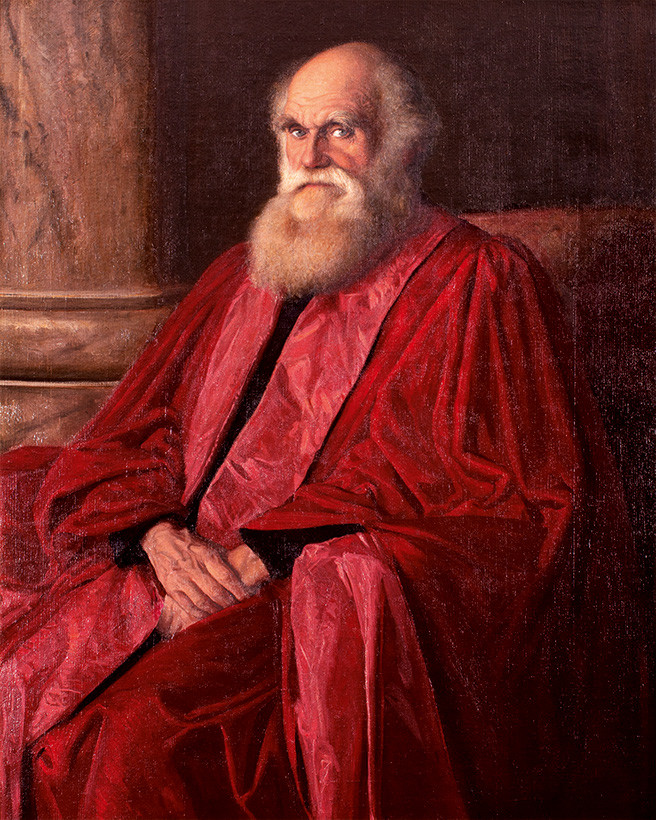
Darwin in letters, 1879: Tracing roots
Summary
Darwin spent a considerable part of 1879 in the eighteenth century. His journey back in time started when he decided to publish a biographical account of his grandfather Erasmus Darwin to accompany a translation of an essay on Erasmus’s evolutionary ideas…
Matches: 12 hits
- … Seventy years old Darwin’s seventieth birthday on 12 February was a cause for international …
- … and good as could be’ ( letter from Karl Beger, [ c. 12 February 1879] ). The masters of …
- … ). The botanist and schoolteacher Hermann Müller wrote on 12 February to wish Darwin a ‘long and …
- … well, and with little fatigue’ ( letter to G. H. Darwin, 12 July 1879 , and letter from Leonard …
- … ever about life of D r . D’ ( letter to Francis Darwin, 12 July [1879] ). It was little …
- … Thiselton-Dyer, 5 June 1879 , and letter to G. H. Darwin, 12 July 1879 ). Darwin’s final task …
- … inn ‘ very comfortable’, but told Leonard Darwin on 12 August that there were ‘too many human …
- … not to have come up when the Darwins lunched with him on 12 August (Darwin’s ‘Journal’). Nor did …
- … the world. At the end of the year he was awarded a prize of 12,000 francs by the Turin Academy of …
- … which greatly pleased Darwin ( letter from Grant Allen, 12 February 1879 ). One of Allen’s targets …
- … engagement being made public ( letter from T. H. Farrer, 12 October 1879 ). Darwin’s response not …
- … accurate in its treatment’ ( letter from Francis Galton, 12 November 1879 ). The comment that …

Darwin in letters, 1874: A turbulent year
Summary
The year 1874 was one of consolidation, reflection, and turmoil for Darwin. He spent the early months working on second editions of Coral reefs and Descent of man; the rest of the year was mostly devoted to further research on insectivorous plants. A…
Matches: 11 hits
- … (letters from George Cupples, 21 February 1874 and 12 March 1874 ); the material was …
- … the Sandwich Islands (Hawaii; letters from T. N. Staley, 12 February 1874 and 20 February 1874 …
- … was published in November 1874 ( letter from R. F. Cooke, 12 November 1874 ). Though containing …
- … print runs would be very good ( letter from R. F. Cooke, 12 November 1874 ). Darwin's …
- … Review & in the same type’ ( letter from John Murray, 12 August 1874 ). George’s letter …
- … he finally wrote a polite, very formal letter to Mivart on 12 January 1875 , refusing to hold any …
- … & snugness’ ( letter from Emma Darwin to J. B. Innes, 12 October [1874] ). More …
- … vicar of Deptford ( letter from Emma Darwin to J. B. Innes, 12 October [1874] ), but to her …
- … mechanism that Darwin agreed with ( letter to F. J. Cohn, 12 October 1874 ). Darwin’s American …
- … bank with enormous tips to his ears ( letter from Asa Gray, 12 May 1874 ). The Manchester …
- … excellent, & as clear as light’ ( letter to John Tyndall, 12 August [1874] ). Hooker …
1.2 George Richmond, marriage portrait
Summary
< Back to Introduction Few likenesses of Darwin in his youth survive, although more may once have existed. In a letter of 1873 an old Shrewsbury friend, Arthur Mostyn Owen, offered to send Darwin a watercolour sketch of him, painted many years…
Matches: 1 hits
- … < Back to Introduction Few likenesses of Darwin in his youth survive, although more …
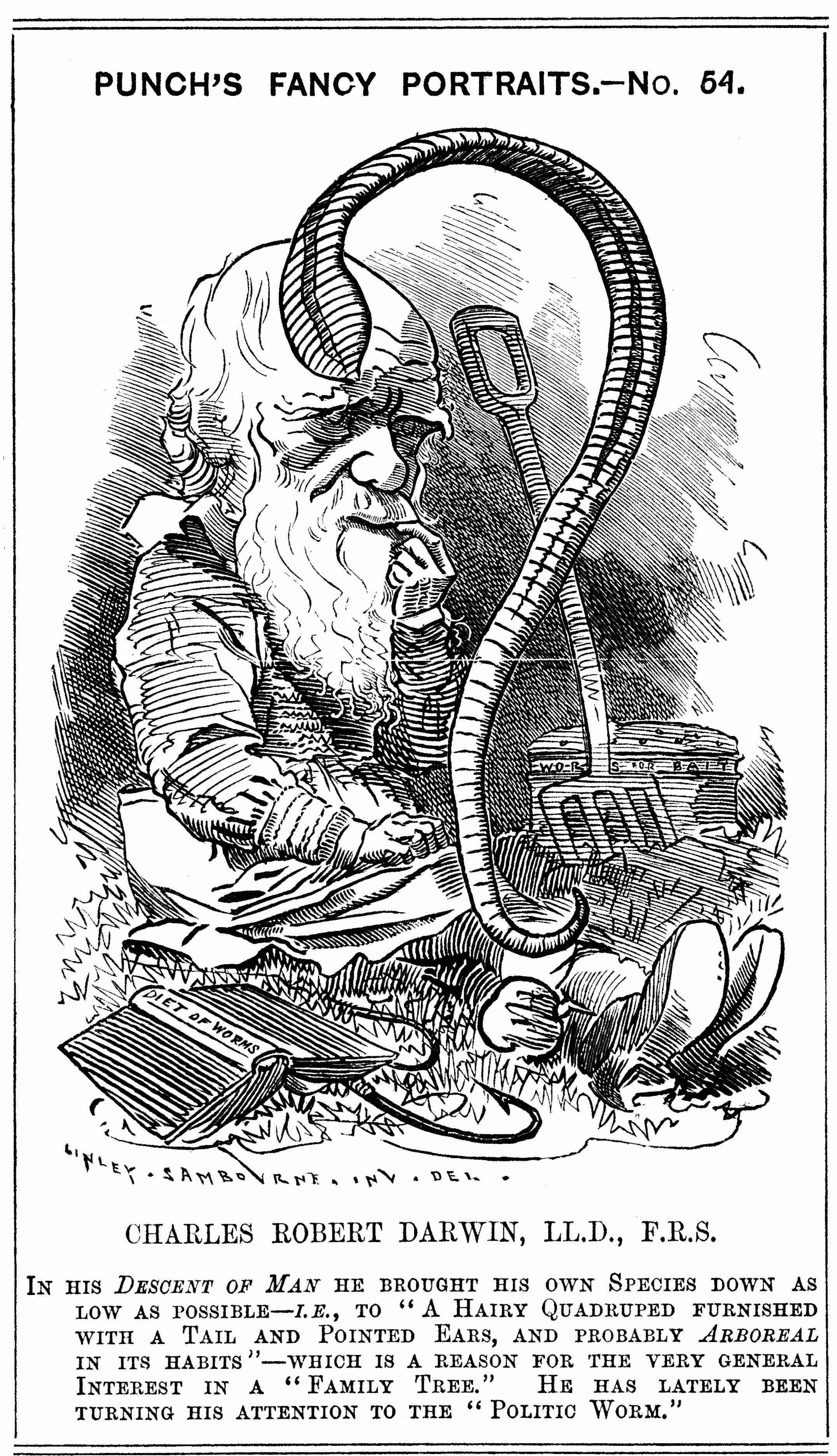
Darwin in letters, 1881: Old friends and new admirers
Summary
In May 1881, Darwin, one of the best-known celebrities in England if not the world, began writing about all the eminent men he had met. He embarked on this task, which formed an addition to his autobiography, because he had nothing else to do. He had…
Matches: 6 hits
- … made a small omission ’. Stephen’s reply on 12 January was flattering, reassuring, and …
- … books being ‘a game of chance’ ( letter to R. F. Cooke, 12 April 1881 ). On 18 May he described …
- … Darwin had difficulty in obtaining mature plants. On 12 April, he reported to Müller , ‘I have …
- … to make me happy & contented,’ he told Wallace on 12 July , ‘but life has become very …
- … fight’ (letters to J. D. Hooker, 6 August 1881 and 12 August 1881 ). Darwin may have …
- … else’s judgment on the subject ( letter to A. R. Wallace, 12 July 1881 ). However, some requests …
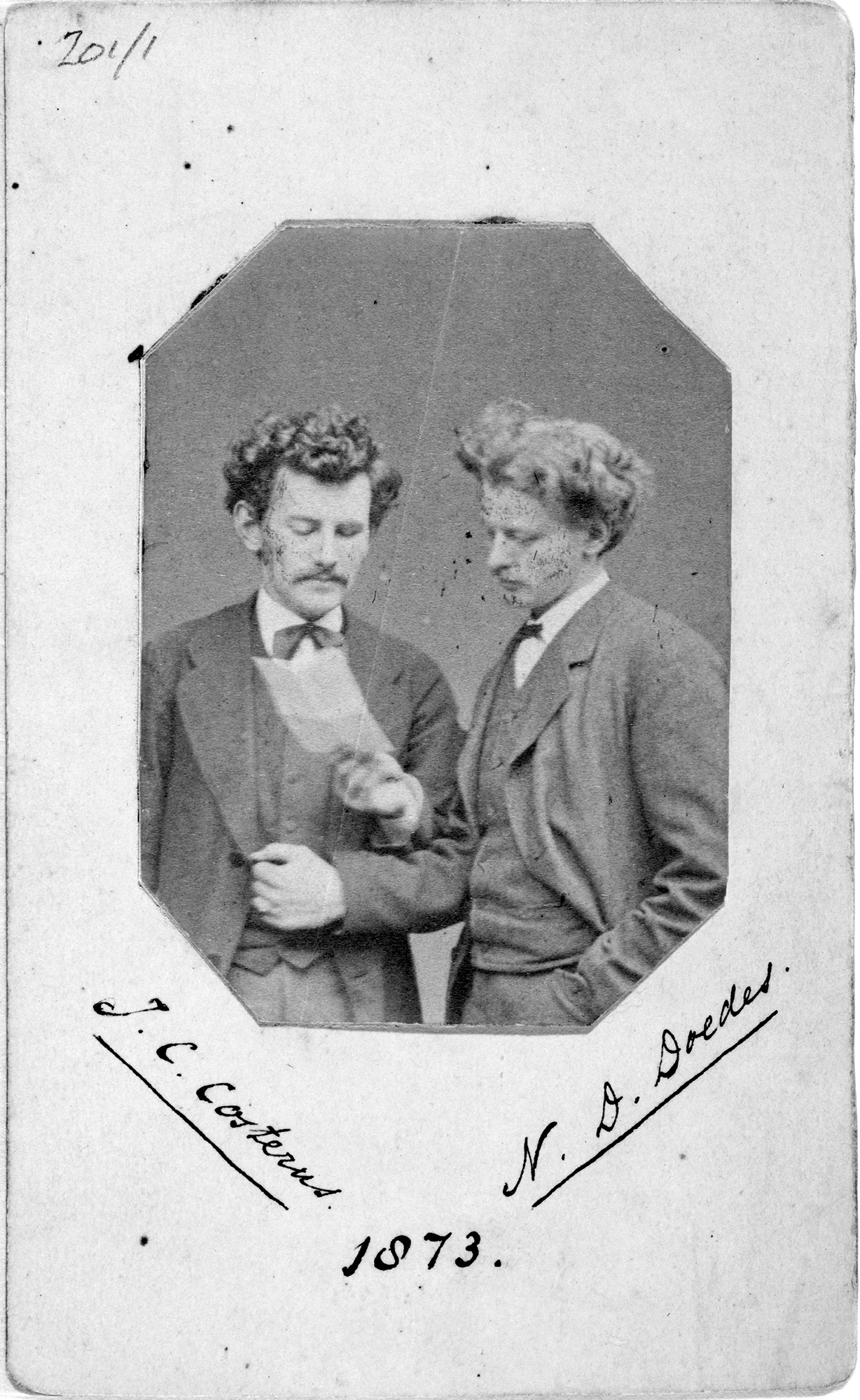
Darwin's in letters, 1873: Animal or vegetable?
Summary
Having laboured for nearly five years on human evolution, sexual selection, and the expression of emotions, Darwin was able to devote 1873 almost exclusively to his beloved plants. He resumed work on the digestive powers of sundews and Venus fly traps, and…
Matches: 3 hits

Darwin in letters, 1862: A multiplicity of experiments
Summary
1862 was a particularly productive year for Darwin. This was not only the case in his published output (two botanical papers and a book on the pollination mechanisms of orchids), but more particularly in the extent and breadth of the botanical experiments…
Matches: 6 hits
- … Hooker: ‘he is no common man’ ( letter to J. D. Hooker, 12 [December 1862] ). Two sexual …
- … of the year, he wrote to Hooker ( letter to J. D. Hooker, 12 [December 1862] ): ‘my notions on …
- … least 3 classes of dimorphism’ ( letter to Daniel Oliver, 12 [April 1862] ), and experimenting to …
- … passed so miserable a nine months’ ( letter to W. D. Fox, 12 September [1862] ). A family …
- … ‘Botany is a new subject to me’ ( letter to John Scott, 12 November [1862] ), but, impressed by …
- … into Tyndall’s ears’ ( letter to J. D. Hooker, 10–12 November [1862] ). Another of Darwin’s …
German and Dutch photograph albums
Summary
Darwin Day 2018: To celebrate Darwin's 209th birthday, we present two lavishly produced albums of portrait photographs which Darwin received from continental admirers 141 years ago. These unusual gifts from Germany and the Netherlands are made…
Matches: 1 hits
- … their generous sympathy. ( Letter to A. A. van Bemmelen, 12 February 1877 ) View the …
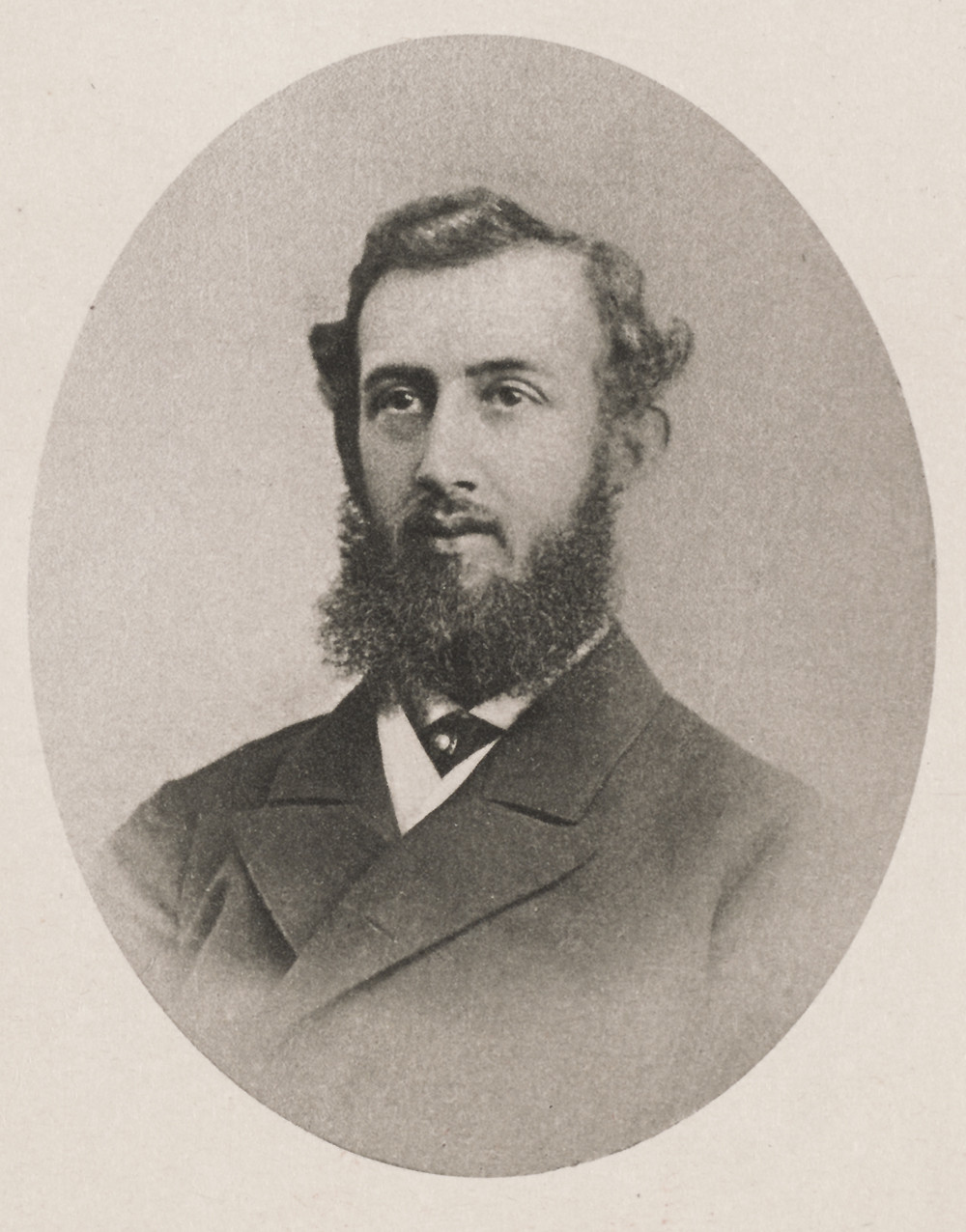
Darwin in letters, 1875: Pulling strings
Summary
‘I am getting sick of insectivorous plants’, Darwin confessed in January 1875. He had worked on the subject intermittently since 1859, and had been steadily engaged on a book manuscript for nine months; January also saw the conclusion of a bitter dispute…
Matches: 5 hits
- … than insectivorous plants. As he confessed to Hooker on 12 December , ‘I have not felt so angry …
- … from his family, he sent a curt note to Mivart on 12 January , breaking off all future …
- … of a bill that was presented to the House of Commons on 12 May, one week after a rival bill based on …
- … The author, Fritz Schultze, contacted Darwin himself on 12 June , describing the aims of his book …
- … scientific Socy. has done in my time,’ he told Hooker on 12 December . ‘I wish that I knew what …

Darwin in letters, 1878: Movement and sleep
Summary
In 1878, Darwin devoted most of his attention to the movements of plants. He investigated the growth pattern of roots and shoots, studying the function of specific organs in this process. Working closely with his son Francis, Darwin devised a series of…
Matches: 3 hits

Diagrams and drawings in letters
Summary
Over 850 illustrations from the printed volumes of The Correspondence of Charles Darwin have been added to the online transcripts of the letters. The contents include maps, diagrams, drawings, sketches and photographs, covering geological, botanical,…
Matches: 1 hits
- … Rubiaceae with enclosures containing bud samples, 12 May 1878 G. H. Darwin's …
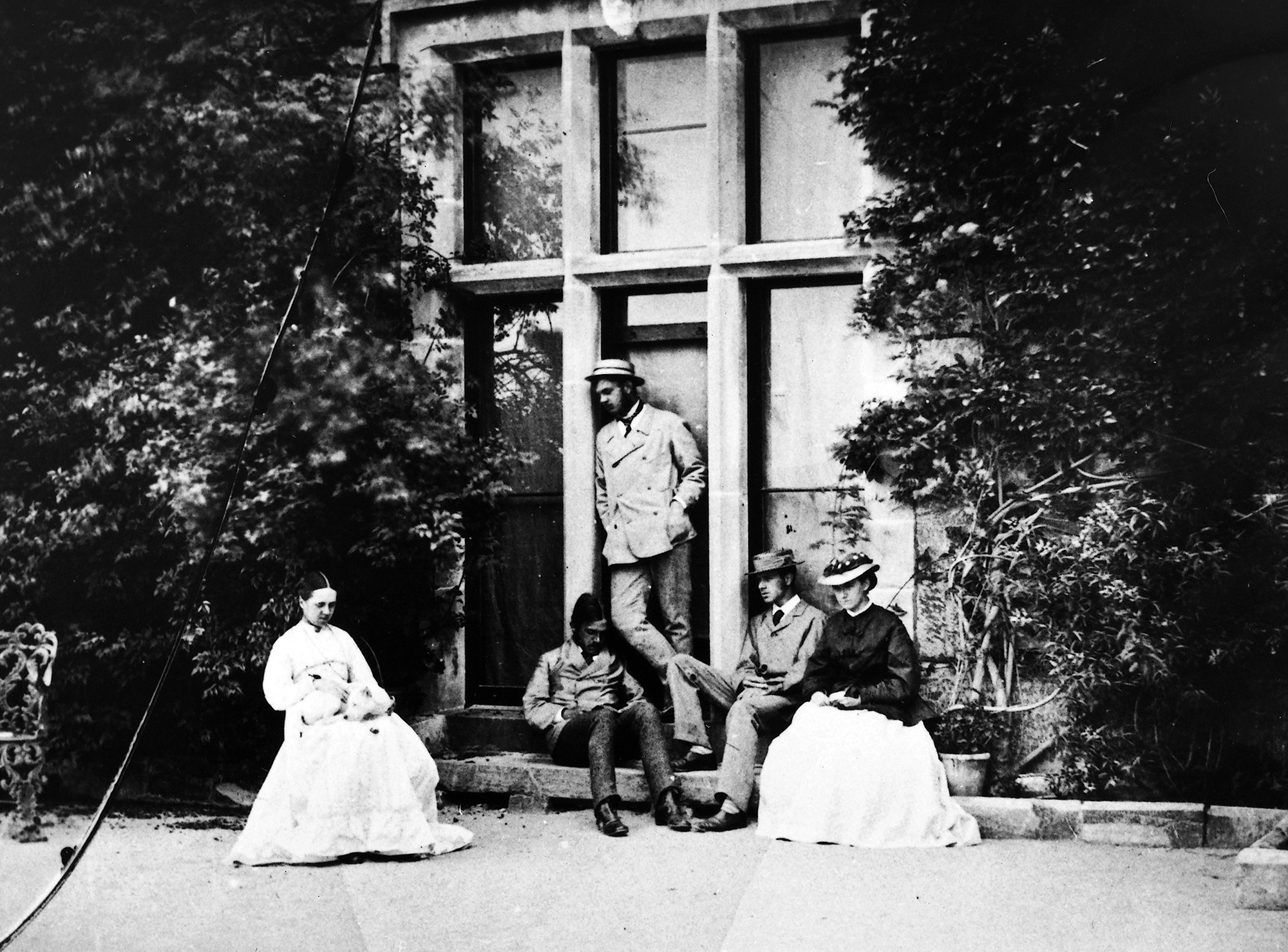
Darwin in letters, 1869: Forward on all fronts
Summary
At the start of 1869, Darwin was hard at work making changes and additions for a fifth edition of Origin. He may have resented the interruption to his work on sexual selection and human evolution, but he spent forty-six days on the task. Much of the…

The Lyell–Lubbock dispute
Summary
In May 1865 a dispute arose between John Lubbock and Charles Lyell when Lubbock, in his book Prehistoric times, accused Lyell of plagiarism. The dispute caused great dismay among many of their mutual scientific friends, some of whom took immediate action…

Darwin’s queries on expression
Summary
When Darwin resumed systematic research on emotions around 1866, he began to collect observations more widely and composed a list of queries on human expression. A number of handwritten copies were sent out in 1867 (see, for example, letter to Fritz Muller…

Darwin in letters, 1847-1850: Microscopes and barnacles
Summary
Darwin's study of barnacles, begun in 1844, took him eight years to complete. The correspondence reveals how his interest in a species found during the Beagle voyage developed into an investigation of the comparative anatomy of other cirripedes and…

Cross and self fertilisation
Summary
The effects of cross and self fertilisation in the vegetable kingdom, published on 10 November 1876, was the result of a decade-long project to provide evidence for Darwin’s belief that ‘‘Nature thus tells us, in the most emphatic manner, that she abhors…
Matches: 3 hits

Henrietta Darwin's diary
Summary
Darwin's daughter Henrietta kept a diary for a few momentous weeks in 1871. This was the year in which Descent of Man, the most controversial of her father's books after Origin itself, appeared, a book which she had helped him write. The small…

Darwin in letters, 1856-1857: the 'Big Book'
Summary
In May 1856, Darwin began writing up his 'species sketch’ in earnest. During this period, his working life was completely dominated by the preparation of his 'Big Book', which was to be called Natural selection. Using letters are the main…
Matches: 3 hits

Darwin & Glen Roy
Summary
Although Darwin was best known for his geological work in South America and other remote Beagle destinations, he made one noteworthy attempt to explain a puzzling feature of British geology. In 1838, two years after returning from the voyage, he travelled…














